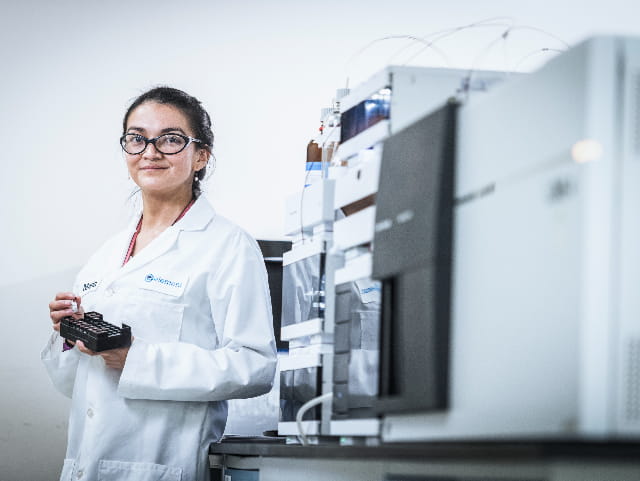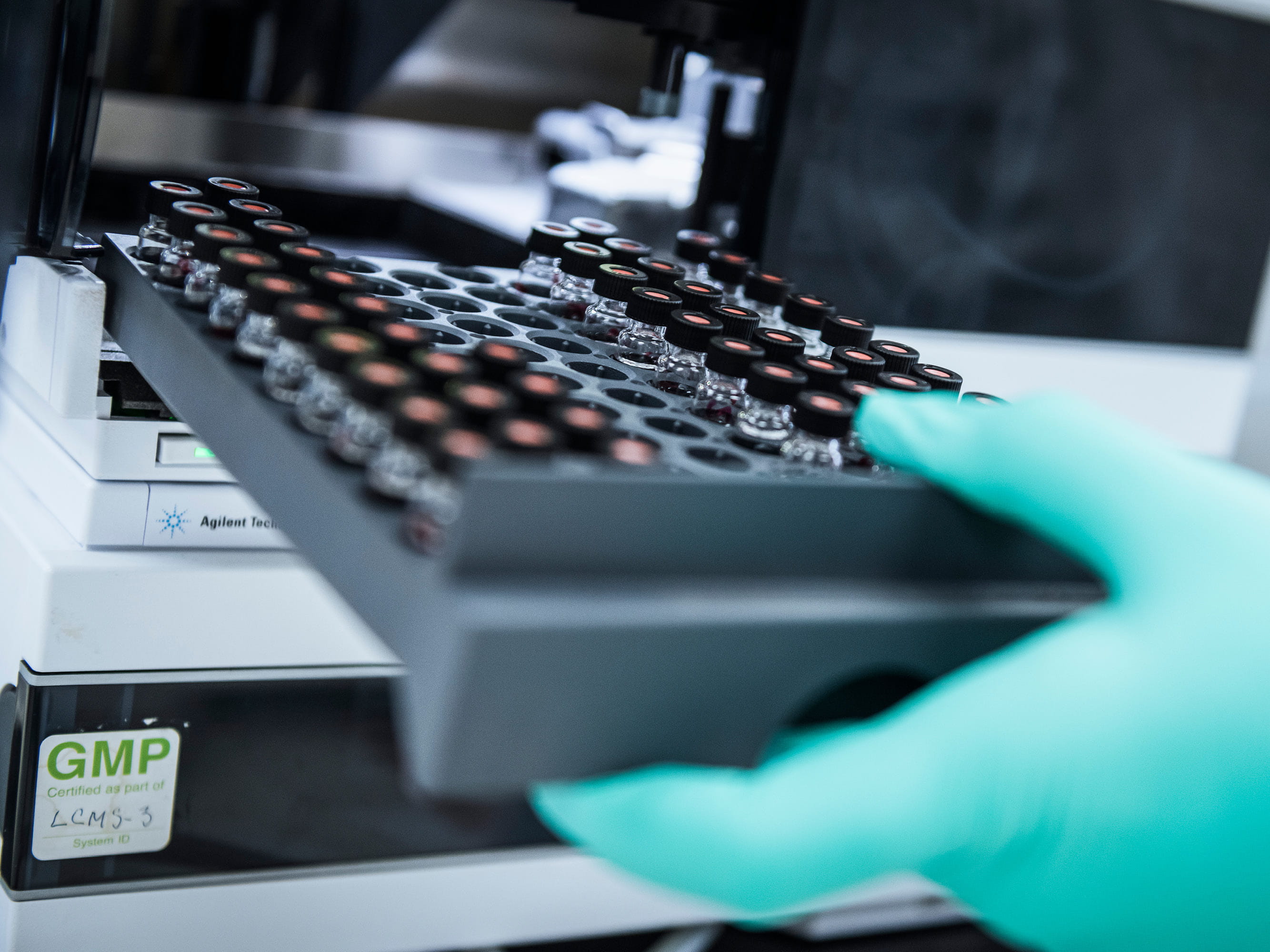Navigating Material Changes: An Extractables and Leachables Perspective
One thing is certain - change is unavoidable. The same is true for the materials used in container closure systems, manufacturing systems, and devices. While these changes can be internal or external, the responsibility for managing these changes always falls to the manufacturer of the drug product/device.
External changes can range from lesser modifications within manufacturing tolerances (e.g., changes to time or temperature) to something as substantial as shifting manufacturing sites. Significant external changes can occur when manufacturers of container closure materials modify the composition of a component (e.g., incorporate a different additive) or decide to stop manufacturing a certain material completely. When drug manufacturers modify validated manufacturing processes or the way in which a component is used, these changes are considered internal. Other examples of internal changes include incorporating components manufactured by an alternative supplier or altering contact time with a single-use container.
Defining change from minor to major
Change has been defined within the US Food and Drug Administration (FDA) Guidance for Industry – Changes to an Approved NDA (New Drug Applications) or ANDA (Abbreviated New Drug Application)1. The guidance classifies changes from minor to major and outlines the regulatory expectations for addressing these degrees of change, including the need for post-approval for several instances of change, per section 506A of the US Federal Food, Drug, and Cosmetic Act (the Act) and 21 CFR 314.70. The guidance describes the following degrees of change, all of which have different requirements for when the change may be implemented, as well as how and when the Agency must be notified:
Minor – Minor changes have “minimal potential to have an adverse effect on the identity, strength, quality, purity or potency of the drug product as these factors may relate to the safety or effectiveness of the drug product.”
Moderate – Moderate changes have “a moderate potential to have an adverse effect on the identity, strength, quality, purity or potency of the drug product as these factors may relate to the safety or effectiveness of the drug product.”
Major – Major changes have “a substantial potential to have an adverse effect on the identity, strength, quality, purity or potency of a drug product as these factors may relate to the safety or effectiveness of the drug product.”
The impact of material changes on the quality of drug products
As seen throughout the years, material changes can impact the quality of the drug product, and ultimately, patients. Although there are several known examples, there is one case, from 1998-2002, that is cited more frequently than others. In patients receiving EPREX (epoetinum alfa) subcutaneously, a rise in the occurrence of antibody-positive pure red cell aplasia (PRCA) was seen during that time. Two material changes had been made, including replacing a coated stopper with an uncoated one, and adding polysorbate 80 to the formulation2. During the leachable analysis of the uncoated stoppers, additional compounds were observed only when used in conjunction with the modified formulation containing polysorbate 80. When the formulation containing polysorbate 80 and the uncoated stopper were used separately in leachable analysis, these additional compounds were not seen.
Very small amounts of leachables can affect biologically derived therapies, and biologics manufactured with single-use systems are at greater risk to be impacted by material changes. The often-cited Amgen paper3 Identification of a leachable compound detrimental to cell growth in single-use bioprocess containers provides such an example. Irgafos 168, a commonly used antioxidant, produced trace amounts of a breakdown product which is detrimental to cell growth. The antioxidant was present at a level much lower than typical screening levels informed by typical toxicological concern. Although antioxidants and other commonly used additives can degrade and form potential reaction products, it is important to note that antioxidants and other additives are needed in polymeric materials to prevent rapid degradation and failure, particularly when container closure systems are exposed to sterilization activities. Extractables and leachables also present a significant risk for reactions with biologics and peptides, with the primary concern relating to the formation of covalent bonds. Given what has been observed thus far, it is likely that changes in materials used in biologics may have a more significant impact than what has been observed with small molecule drugs and/or medical devices. Considering that biologics are the fastest growing class of therapeutics, the outcome of the work currently in progress to help identify potential issues with common leachables in biologically derived therapies is highly anticipated.
These examples clearly demonstrate the critical need to understand the materials used in container closure and manufacturing systems for biologics and peptides. A thorough understanding of these materials will allow drug manufacturers to avoid these issues altogether, eliminating the need to problem solve after the event. Furthermore, the risk presented by interactions with leachables can be reduced if appropriate data is obtained for the materials used for biologics and peptides. Such data can be generated when studies of sterilized or treated materials under suitably appropriate extraction conditions with sufficient sensitivity are undertaken. In these studies, extractables can be correlated with leachables.
Looking beyond container closure systems and preparing for the future
It should be noted compounds can be introduced into drug product by sources other than the container closure system can compromise patient safety and product quality. Several product recalls were traced back to wooden pallets treated with a biocide that were used in the storage of boxed product in 2010. 2,4,6-tribromoanisole (TBA), a degradant of the biocide, migrated into the products, resulting in recalls of tainted product. Directly related to this issue, 55 million bottles of Tylenol were recalled during a 6-month period in 20104. In order to avoid a similar issue, several biopharmaceutical companies no longer use wooden pallets in the transport or storage of product.
With an ever-increasing focus on “green” materials and push to reduce single-use plastics, it is highly likely container closure system materials will shift to align with these preferences. What remains to be seen is whether the polymers used in these materials can be depolymerized back to the starting monomers due to changes in additive packages. If that is the case, these materials could potentially be used as virgin materials, as opposed to recycled materials. Whatever the future holds, with one of the largest and most experienced extractables and leachables practices in the world, Element’s experienced E&L regulatory and scientific experts will help you navigate the ever-changing landscape. Learn more about our extractables and leachables testing services or get in touch with us today to explore a partnership with Element.
Find related Resources
Related Resources
More from Element

Extractables and Leachables Studies
Our extractables and leachables studies offer tailored solutions that ensure patient safety and compliance with industry standards.

Parenteral Product Development and Phase I & II Clinical Manufacturing
Element is at the forefront of pharmaceutical development and manufacturing of parenteral formulations, providing specialist parenteral product development and clinical manufacturing services.

Chemistry, Manufacturing, and Controls (CMC) Consulting Services
We provide consulting services for Chemistry, Manufacturing, and Controls (CMC) product development in the pharmaceutical and biotechnological industries.
Sign Up for Free Resources
Visit Element's email subscription center to receive the latest industry news, technical whitepapers, case studies, webinars, and upcoming events.



